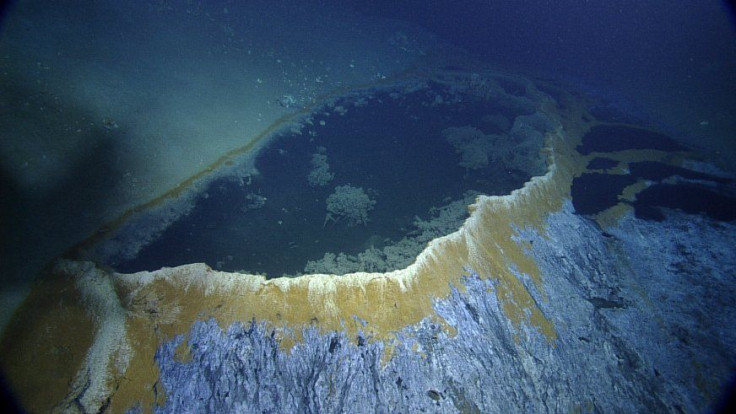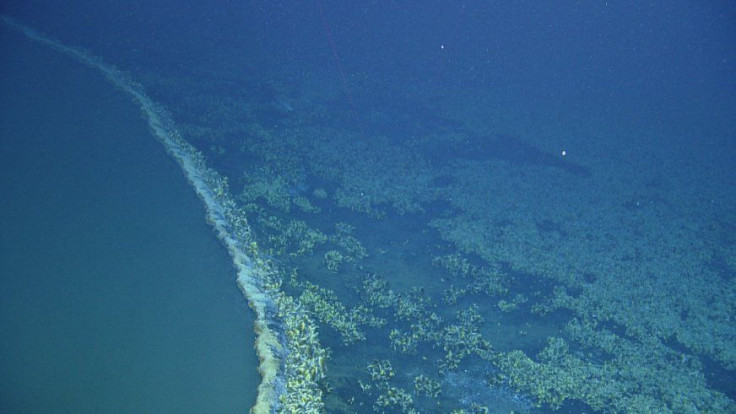Killer Brine Pool — ‘Jacuzzi Of Despair’ — Under Gulf Of Mexico

So far as water bodies go, the Dead Sea has a morbid name even though it is best known for its extremely high salt content that allows people to float on its surface effortlessly. But that is no match for the salinity, or the actual fatality, of an underwater lake discovered in the Gulf of Mexico.
Nicknamed the “Jacuzzi of Despair,” the brine pool is highly saline, to the extent that it kills most life forms larger than mussels that fall inside. A brine pool is an underwater lake, complete with its own distinct surface, shoreline and waves. It forms when salts from ancient seafloors get leached out and turn the water around the area extremely saline, the density too high for it to mix with the seawater around it.
The “Jacuzzi of Despair” is located at a depth of about 3,300 feet in the Gulf of Mexico and was found by E/V Nautilus, an ocean research vessel based out of San Pedro, Calif. The lake was so named in reference to the relatively warm temperature (19 degrees Celsius, or 66 degrees Fahrenheit) of the water, given the depth and the bubbles seen seeping through the water. It rises about 10 feet from the surrounding seafloor.

The water in the pool is high in methane and sulfides, and is highly toxic to most forms of life. Consequently, creatures — such as a “pickled crab” researchers point out — unlucky enough to fall in don’t usually make it back out. However, there are mussels that live along the shores, nestled in sediment rich in chemosynthetic (using carbon compounds, like carbon dioxide or methane, and energy from inorganic compounds like hydrogen sulfide to create biomass) bacteria.
© Copyright IBTimes 2024. All rights reserved.





















